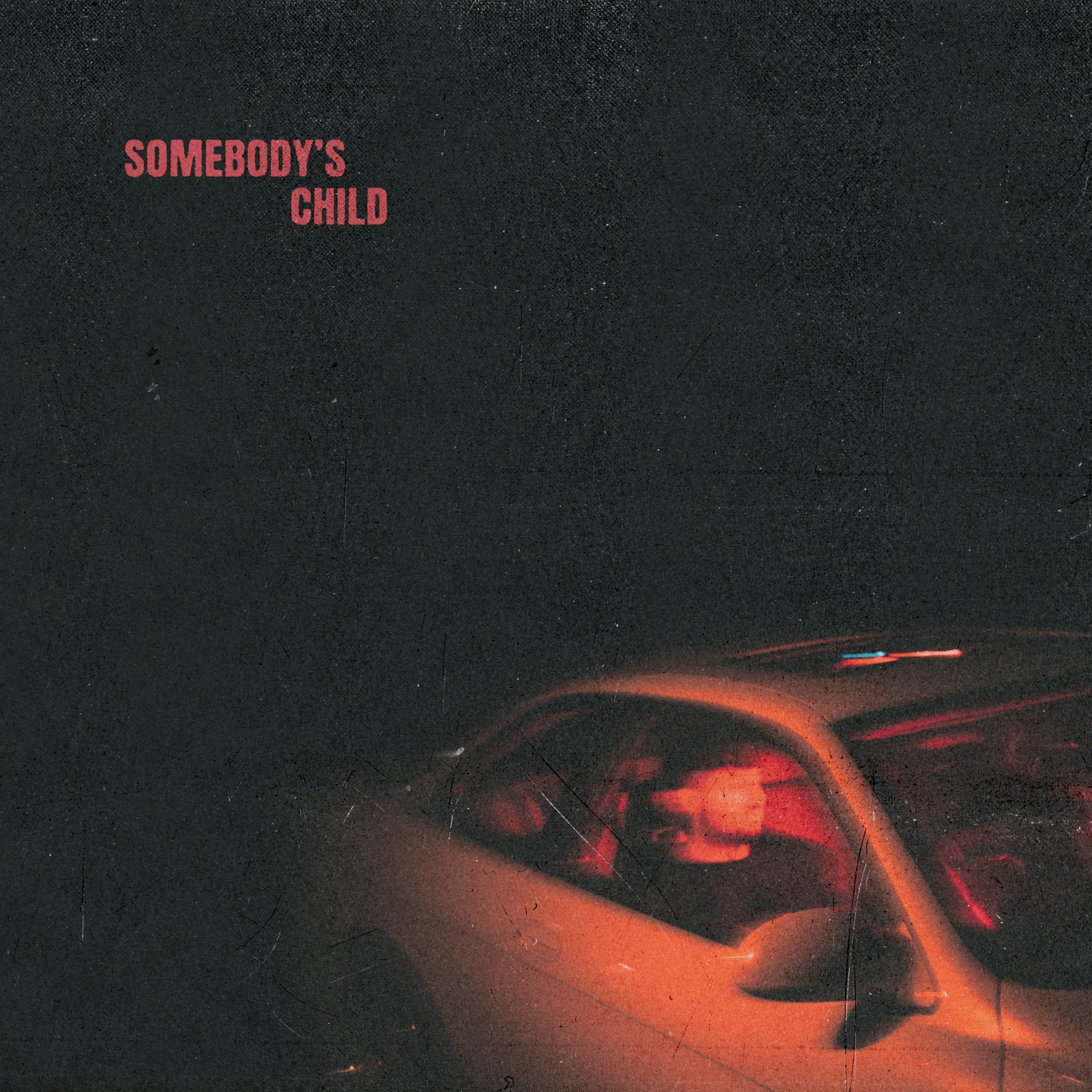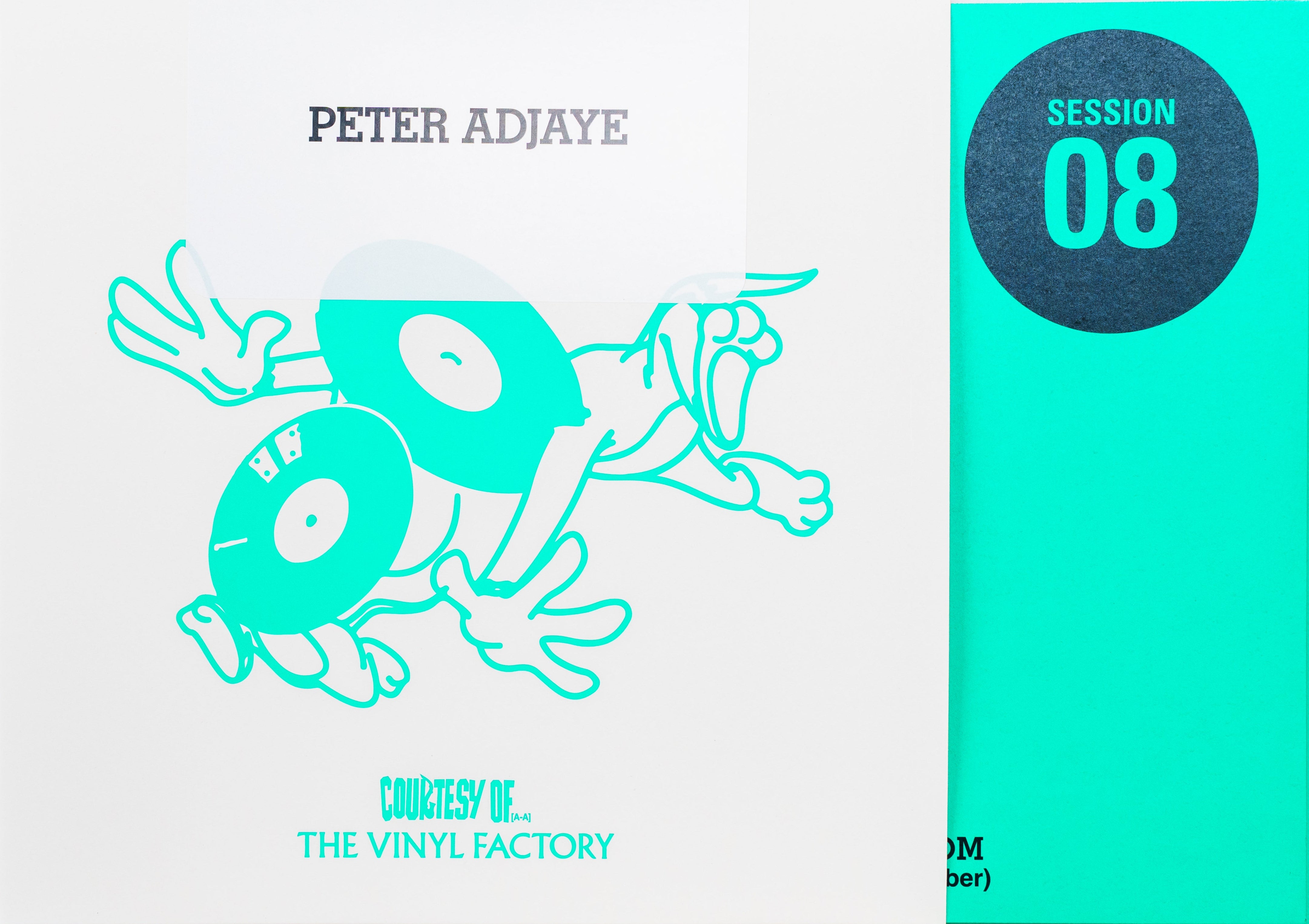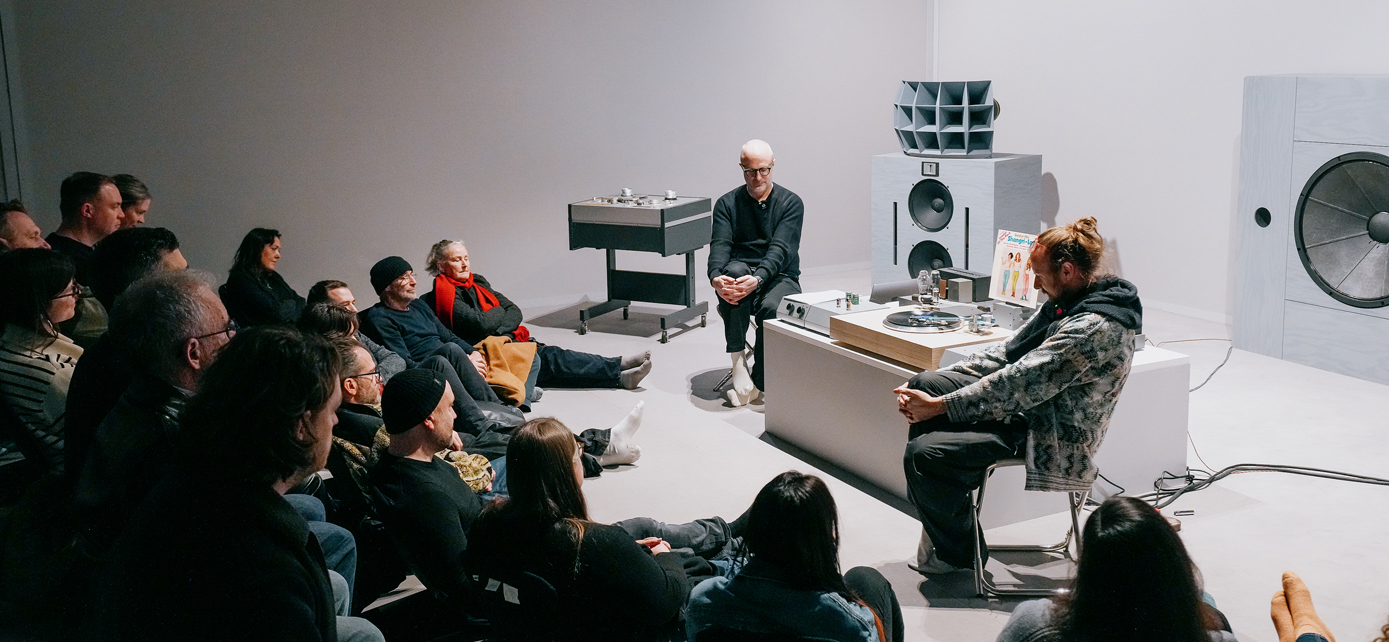
The musical world of Punchdrunk
Recorded at Devon Turnbull's Listening Room in 180 Studios.
Founded in 2000 by Felix Barrett, Punchdrunk has redefined immersive theatre, placing audiences at the centre of the action. Named one of Sky Arts’ 50 most influential artists of the past half-century in 2022—alongside David Bowie, Sir Steve McQueen and Vivienne Westwood—the company is known for removing theatrical boundaries by building vast, intricately detailed worlds.
Last year, VF released the score to Punchdrunk’s The Burnt City – marking the first time a Punchdrunk soundtrack was ever available to take home on vinyl. The Burnt City, Punchdrunk’s longest show in its 25 year history, was inspired by Aeschylus’ Agamemnon and Euripides’ Hecuba and transported the greatest of Greek tragedies to a sprawling neon metropolis.

On a recent visit to Devon Turnbull’s Listening Room at 180 Studios, Felix Barrett and Stephen Dobbie (sound designer) sat down to discuss and share the records that inform and influence Punchdrunk’s sound.
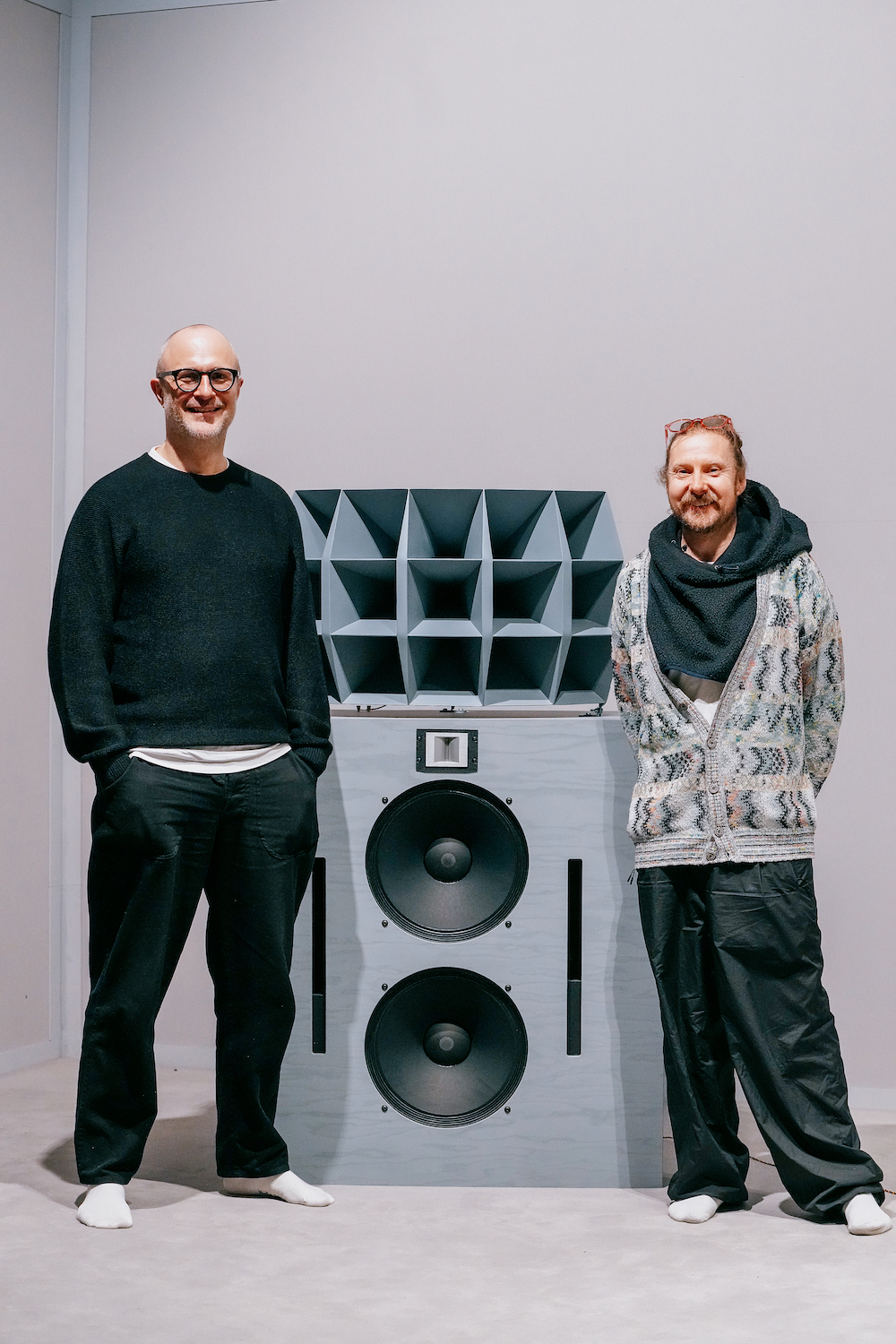
Listen to the conversation below or read on to uncover the sound of Punchdrunk.
Stephen Dobbie: We wanted to share something: the sound of Punchdrunk and its sound history, inspirations, and influences, almost from before Punchdrunk even existed.
Felix Barrett: Definitely an origin story. The piece you heard at the start was from a CD-ROM by Peter Gabriel called Eve, one of the earliest video games we had when I was 14 and we got it for our computer. It was the only game we had, so we played it over and over. It had an incredible soundtrack that introduced me to the idea of a pedal note, and how a pedal can create a huge atmosphere.
As soon as I met Stephen, or DJ Ethics as I first knew him, we had a longstanding musical relationship, both of us DJs. We talked about the idea of a soundscape and how to create an atmosphere you can walk into. That piece from Eve was my first offering to Stephen, and it’s fascinating to hear it now, 25 years later.
I think my frugal upbringing is part of Punchdrunk’s aesthetics. We had one video game, Eve, and before that, when I was seven or eight, we only had two cassettes. On long car journeys to relatives, we would either listen to The Ink Spots or Jack Buchanan as the motorway lights flew past…
FB: Do you remember when we were making Sleep No More? We put on the record effect. It was all about dense nostalgia.
SD: The deep crackle of a 45… or a 33. I like that it sounds like Sleep No More.
FB: It’s like nostalgia on nostalgia.
SD: We’ve tapped into that over the years with the idea of timelessness, of familiarity. Much of it is rooted in the nostalgic feeling you get from listening to records that are so of a time but could equally exist out of time. The shows aim for a dreamlike space, where waves of nostalgia waft in and out. You might not know exactly what it is, but it feels right.
FB: It’s also interesting that both those tracks have a male vocal in a higher register. It makes it feel otherworldly. It’s maybe a vocal aesthetic that’s less familiar or certainly was in the 90s. It’s like you can feel the ghosts breathing through.
FB: This again is my dad’s. Maybe the childlike sense of awe and wonder we try to create in Punchdrunk shows comes from the fact these are all my childhood records. That album cover is seared into my memory. And again, when Dobbie and I were looking for that nostalgic palette—the whole show, The Drowned Man, came from that album.
SD: I think we both came to it from the same place. I forget which Shangri-Las track you brought and you were like, yeah, that’s it.
FB: We put all of them in. The one we thought would be too obvious was “Leader of the Pack.” That was always the anchor song; the Shangri-Las’ most famous track. We tried to shoehorn it in any way but never did. Maybe one day, if we bring that show back…
SD: Context for this one: if the worlds we build are about trying to step into the record, like with the Shangri-Las, you hear the seagulls and want to step onto that beach, this track was something we loved, but didn’t want to step into. The sound quality is so reedy and the wind is so shrill like nails on a chalkboard. It’s interesting melodically, but as something to listen to… You look at it, but don’t go near it.
However, the starting point for Sleep No More, musically, was this. Let’s hope it still sounds good.
FB: That is the literal starting point for Sleep No More. An old lecturer of mine played it at the end of a dinner party. I thought, “Oh my gosh! Imagine stepping into that track between the grooves and being surrounded by it.” I took it to Ethics. It’s the only track that features across the entire building.
SD: Bernard Herrmann became a key source of inspiration for a lot of the sound design and composition work I took on – creating soundscapes and drones that would charge a space with atmosphere and allow audiences to explore their own journey.
FB: Your genius is creating that sort of sonic negative space, which suspends an atmosphere, so when a big orchestral piece comes in, it’s like all the air rushes back in. It’s a balancing game.
Another thing Ethics is amazing at is using your approach to making contemporary music by cutting together and blending different bits of orchestral music to create something new.
SD: Thank you, Ramsay.
FB: If the City of Prague re-recording of Bernard Herrmann’s Vertigo was the starting point for Sleep No More, this was the starting point for The Drowned Man. We’d just got the building in Paddington, just before Christmas, and knew we had to open on June 22nd. We weren’t sure what we were doing. On Christmas Day, my dad put that track on… all roads lead back to your dad. I thought, “Oh my gosh! This is it!”
That became the starting point to craft the show. Listening now, it’s more akin to Eve. It’s a pedal note. There’s only really one chord with a couple of progressions but essentially it’s just that tonal baseplate, which enables things like the Shangri-Las to sit on top. Then we needed the big emotional peaks — this time not orchestral, but in the same palette.
SD: It’s just oozing with danger and drama. So much is done with so little which is something we had to do in the early days of Punchdrunk shows. Doing as much as you can with very little.
FB: The restraint in it is the same as your compositions; you give space for the imagination to fill in the gaps. And yeah, there seems to be a recurring motif of…
SD: Your dad.
FB: My dad. (laughs) And very little happening on very few chords. It’s almost anti-music.
SD: This next one is musical. So much of the musical choices and influences for the shows… in the early days, sampling was huge for me. Making hip-hop and funk beats in my bedroom. Sampling, recontextualising, appropriating music, objects, stories, and recontextualising them within the world we were creating. This is a good example of turning something mainstream into something of our own.
SD: This track brings us up to The Burnt City. It came out of left field when you presented it to me.
FB: Yeah, quite a curveball. Over the years, we’ve looked at many film scores that are trying to create a filmic experience, where you feel like you’re inside the movie and the soundtrack surrounds you.
SD: The Burnt City was in gestation for a long time which in some ways was good. An impending deadline can be a wonderful catalyst for creativity, but the long process allowed ideas to ruminate and become something, or get put aside.
My sonic relationship with shows often comes later. Felix, Maxine, and the design team conceive the show, and once there’s imagery and themes, I start thinking about the sound.
Here are a few tracks that, during that long gestation period, played in the background of my mind and ultimately informed The Burnt City soundtrack.
SD: Quite melancholic, that one. I used to run to it!
FB: Did you! How fast?
SD: Very slowly. Like I was in a Punchdrunk show. That was on a mixtape I listened to religiously.
FB: How long ago?
SD: Five, six years ago.
FB: Who gave you the mixtape?
SD: I can't remember. Somebody with far better taste than me.
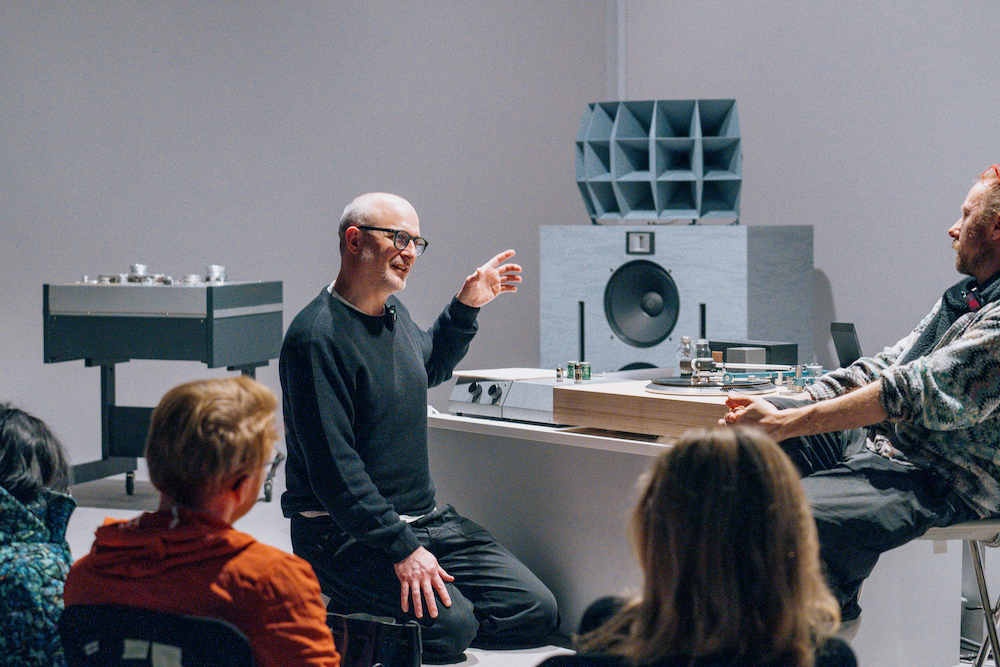
SD: So this journey through sound has brought us to The Burnt City, the most recent and last of its form in the UK of that scale of show.
I knew early on I wanted as much of the soundtrack to be original. After a month of workshopping and playing around, I had a chunky portfolio of audio you could listen to before going into production.
FB: It’s amazing.
SD: A really special moment to almost create the world before it was built physically.
Punchdrunk's The Burnt City is available on 2xLP marble coloured vinyl now. Find out more about the Devon Turnbull Listening Room at 180 Studios here.
This conversation has been edited for clarity.



